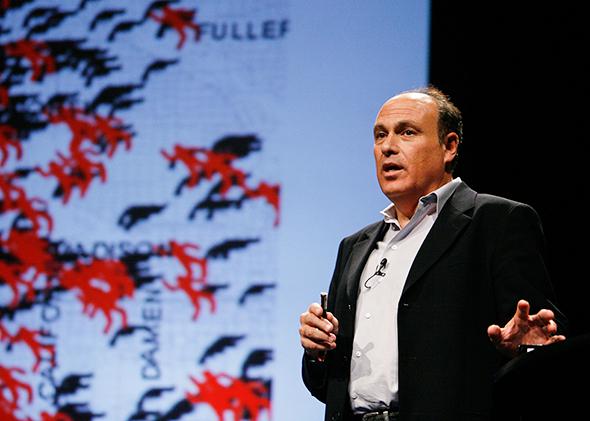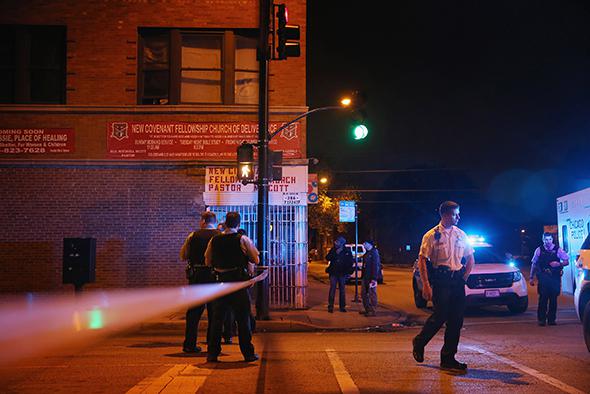Gary Slutkin is a professor of epidemiology and public health at the University of Illinois at Chicago. He is the founder and executive director of CURE Violence. Two shocking street killings by children inspired him apply the tools of epidemiology to violence—and discover how to immunize against it.
Madhumita Venkataramanan: You began your career working on infectious diseases. What was your focus?
Gary Slutkin: I began to understand how diseases spread—and how to control them—with tuberculosis. From 1981 to 1984, I was an infectious-disease fellow at San Francisco General Hospital and was then made responsible for controlling TB in the whole city. I had to learn all the characteristics of spread and how to find active cases and “contacts”—people who can transmit it invisibly. Later, I worked on cholera and TB in Somalia. And from 1987, I worked at the World Health Organization for seven years on HIV and AIDS epidemics in Africa.
What strategies were most successful for stopping the spread of disease?
Controlling HIV was almost entirely about changing behavior. I ended up hiring a lot of psychologists and others who understood how to change community norms. In Uganda we ran an education campaign to destigmatize HIV-positive patients, explain how HIV is transmitted, and promote prevention, including using condoms. The dominant message was “stick to one partner.”
What prompted your shift from disease to street violence?
After 10 years working in Africa, I moved back to the United States in 1994 and was looking for how I could be useful at home. Two incidents from that time had a big impact on me. One was a 12-year-old boy who performed an “execution style” killing under a bridge. The other was another 12-year-old who threw someone, making them fall seven to 10 flights from a housing project, for not giving him some candy.
When I looked into it, I thought the strategies being used against violence had no chance of working. They had little scientific basis and grossly misunderstood and overvalued punishment. I knew violence was a behavior – just like exercise, smoking, overeating, or having sex. It looked to me like a field with a giant gap.

Photo courtesy Kris Krüg/Flickr
Why did you think your background in infectious disease might be useful in this area?
I was particularly compelled by one thing: The greatest predictor of a shooting is a prior shooting. That’s what distinguishes infectious disease; it causes more of itself. That’s the case with flu, a cold, or TB. On a map, violence looks like circles with high concentrations in their middles. It’s the same with cholera or malaria.
Did you see other parallels?
Just as more exposure to colds or flu makes people sick more frequently, exposure to aggression causes people to exhibit violence more frequently. We have seen this directly in our work—nearly 85 percent of our outreach workers in Chicago report that their clients were targets of abuse at home.
We know that as many as 30 percent of those exposed to child abuse as victims become abusers themselves. As psychologist Albert Bandura showed years ago in his famous Bobo doll experiment, children copy the behavior of adults.
Why does violence reinforce itself? Through mirror-neuron circuits, our brains retain and regenerate repetitions of complex behaviors we witness, as behavioral scientist Marco Iacoboni at the University of California-Los Angeles has shown. These circuits help us to learn unconsciously, by copying or modeling what they see. But it also means that people who have observed violence are 30 times more likely to commit it. Under certain conditions it can be up to 100 or 1,000 times more likely.
So is exposure the primary factor that perpetuates cycles of violence?
A second process that kicks in later through your teens has to do with needing peer acceptance. Naomi Eisenberger at UCLA has shown that avoidance of the pain of social rejection is represented in the brain in similar locations as physical pain. So social slights or insults can promote recruitment of new “infected” persons and groups and spur outbreaks of killings.
You have developed a research-based “cure” for violence in the real world. How does it work?
One-third of shootings are retaliations, so that is the point at which you have an opportunity to interrupt the cycle of violence. We train disease-control workers—or violence interrupters—to stop potential shootings. We teach them how to talk someone down, distract them, change the setting, and change their perspective. They make potential shooters take on the perspective of their own child or parent, and realize that it’s socially safe not to shoot. When they realize it’s not expected of them, they don’t do it.
When did you first try this out?
In February 2000, we tested our theory in West Garfield Park, the most violent neighborhood in Chicago. To begin with, we organized responses to shootings, so people would see there was social objection—not just from the police, but from their own community.
How well did that pilot program work?
The summer after we launched, there were no shootings or killings for three months straight. This was unheard of. It went from 43 shootings in 1999 to 14 in 2000. Three years later, it went down to about seven.
You now have programs running in seven countries. Does your approach change for different situations?
We have worked in Basra in Iraq, Cape Town in South Africa, and in parts of Honduras in an intense gang/drug cartel situation. In many of these situations the groups are in-fighting, so that changes who we need to hire as interrupters. In Basra, for example, we hired people with tribal connections and religious credibility. In its first year, 2009, we intervened in 112 violent incidents and prevented a potential killing in 105 of those cases. It is different in Iraq versus Central America and Africa, but lethal street violence has been our main focus.
Have you tried to tackle other types of violence, beyond that at street level?
Since 2011 we have been using this approach in a juvenile detention facility in London, where we’re employing some of the prisoners themselves to be interrupters.
We also have a three-year plan to explore new adaptations. We’ve met with the U.S. Centers for Disease Control and Prevention, and they want to talk about adapting to other areas of violence, such as honor killings and military suicides.
Have you done much work on prevention—vaccinating against violence, so to speak?
Well-placed interruptions prevent outbreaks. But with high-risk individuals in groups or cliques, we have a specialized intervention even before a precipitating event occurs. We work to develop new behavioral patterns around triggers—like feeling insulted or disrespected by another clique—to practice new sets of responses, and ensure social rewards and peer recognition. Changes in social expectations are the best immunization.
As a society, do we need to change how we think about violence?
Violence is a public health issue. The health system includes government departments, hospitals and healthcare practitioners. They all have a role in preventing relapses after a gunshot victim is released, just like after a TB or HIV-positive patient leaves. It is not about good and bad people. Violence should be seen as a disease: It is interruptible and treatable.
This article originally appeared in New Scientist.
